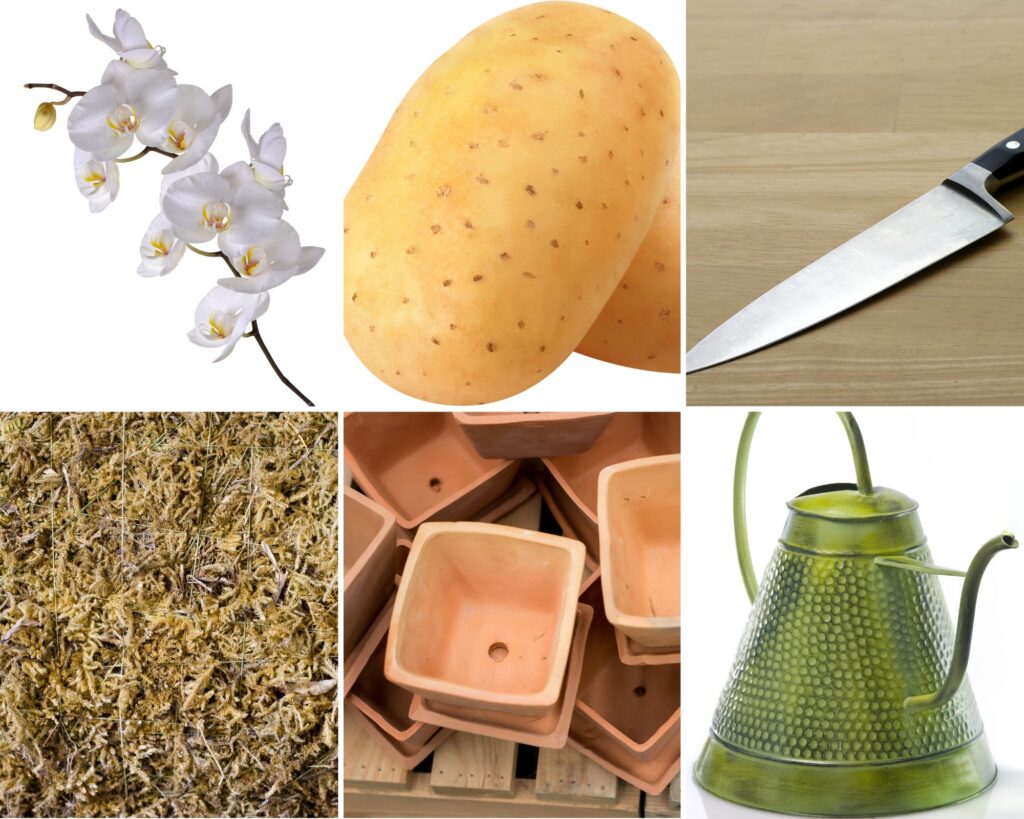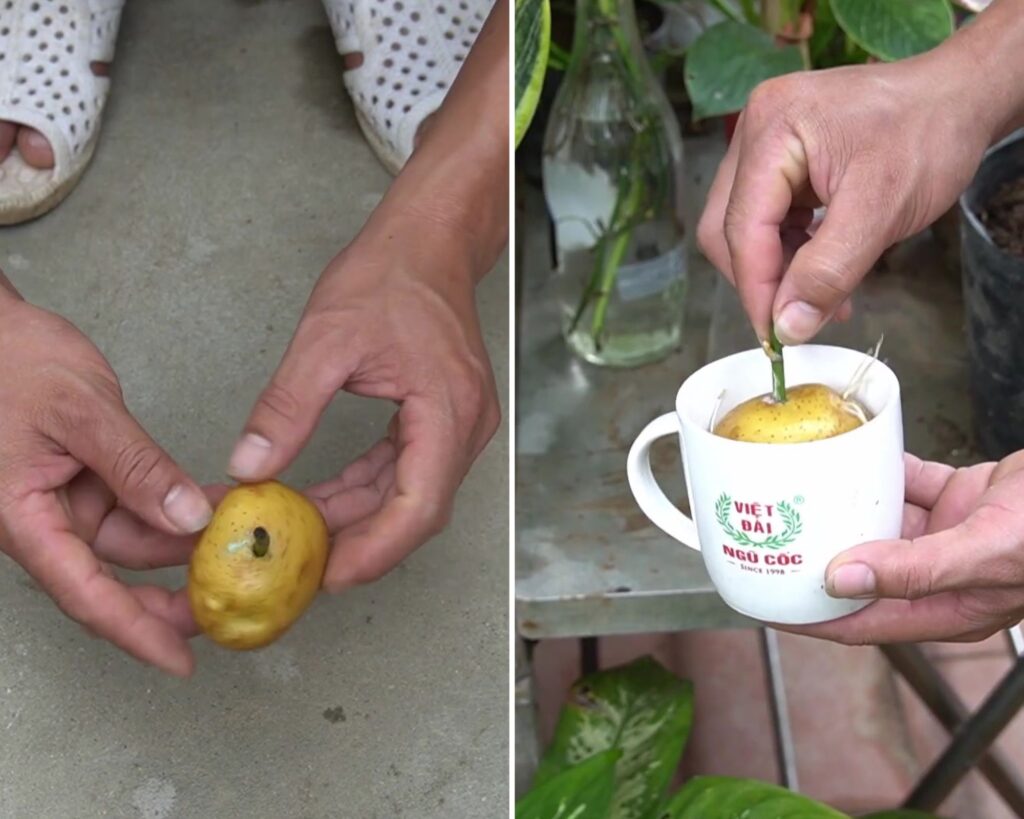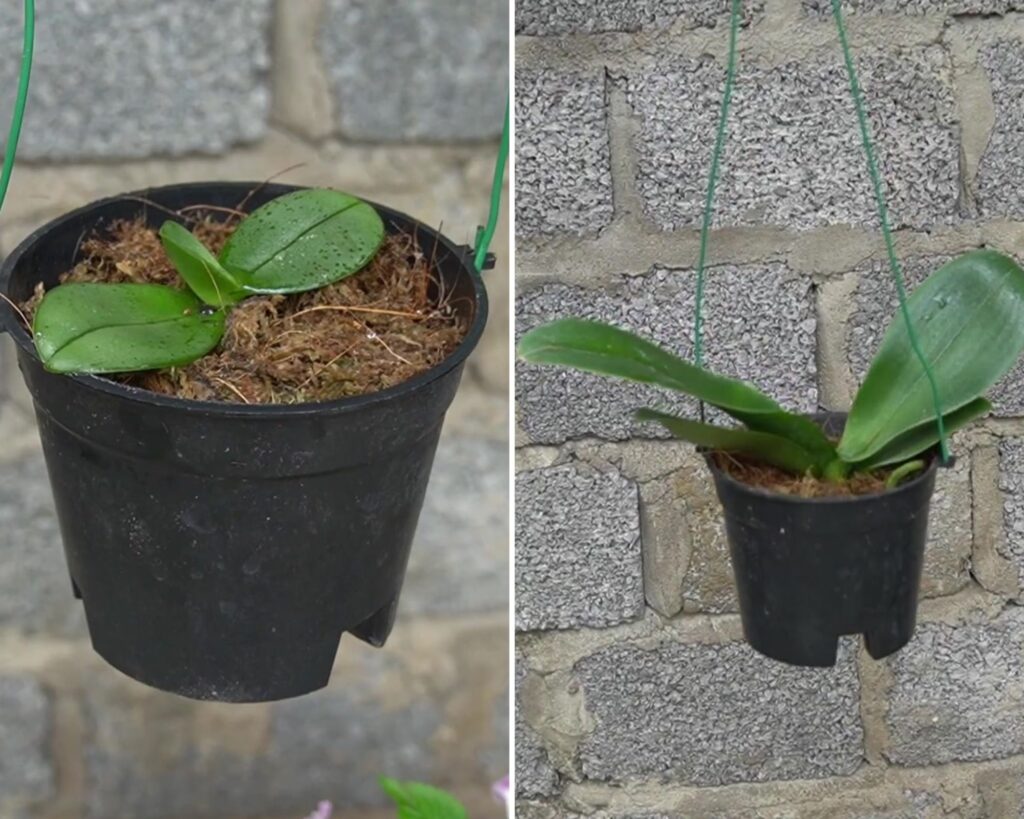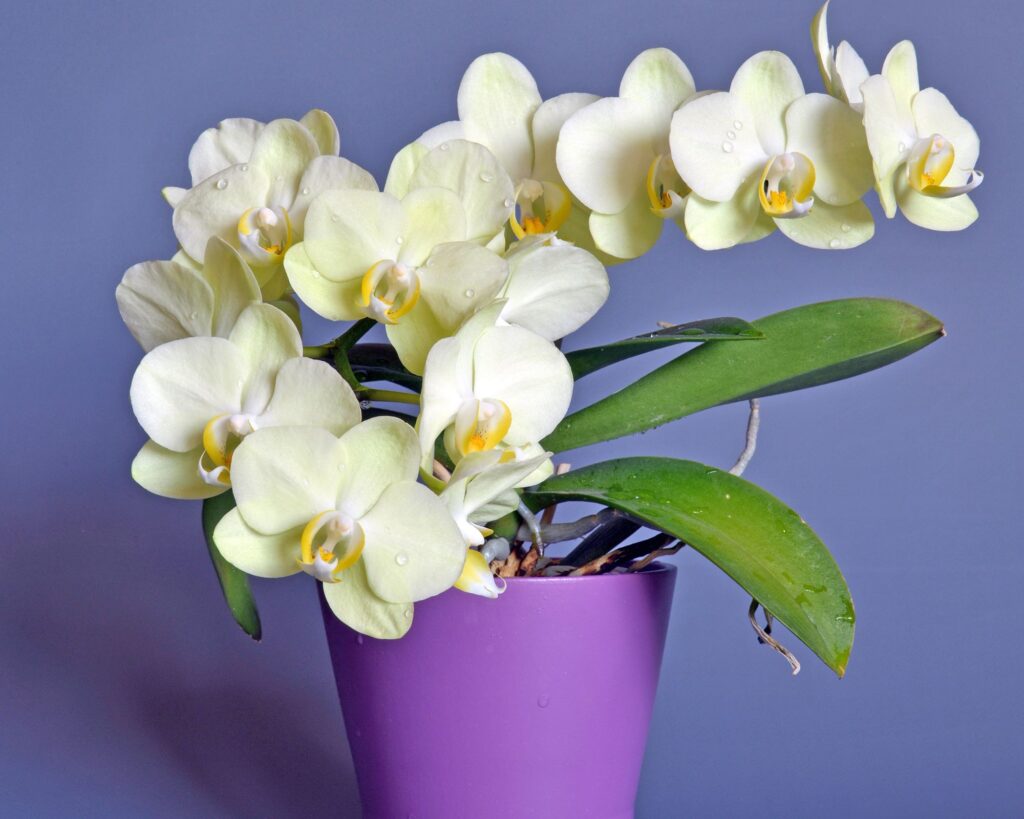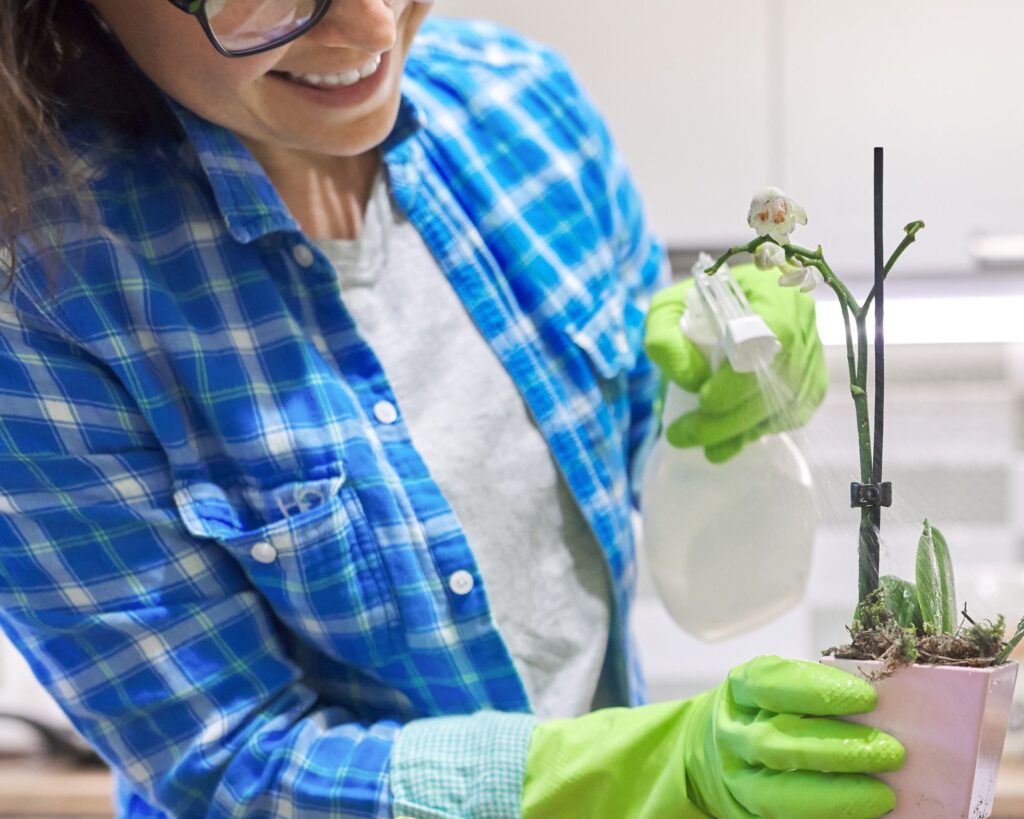Orchids are known for their exotic beauty and delicate blooms, but they also have a reputation for being difficult to grow. However, there’s a surprising and unconventional method that can simplify the process: growing orchids in potatoes. This method is not only easy but also requires minimal effort, making it accessible for both seasoned gardeners and beginners alike.
In this blog post, we’ll explore why growing orchids in potatoes is an effective technique, how to do it step-by-step, and provide tips for ensuring your orchids thrive in this unique environment. By the end, you’ll be ready to try this innovative approach and enjoy stunning orchid blooms with minimal fuss.
Why Grow Orchids in Potatoes?
Growing orchids in potatoes might sound strange, but this technique has several benefits that make it worth trying:
- Moisture Retention: Potatoes are naturally moist and can help provide a steady supply of water to the orchid’s roots. This reduces the need for frequent watering and creates a more stable environment for the plant.
- Nutrient Supply: Potatoes contain starches and other nutrients that can feed the orchid, promoting healthy growth. The potato also serves as an organic base that slowly breaks down, enriching the soil around the orchid.
- Ease of Use: Unlike traditional orchid-growing methods, which often require specific soil mixes, fertilizers, and precise watering schedules, growing orchids in potatoes is straightforward and requires minimal materials.
- Space Efficiency: This method is ideal for those with limited space, as it allows orchids to be grown in smaller containers or even directly in the potato itself, without the need for large pots or extensive setups.
Step-by-Step Guide to Growing Orchids in Potatoes
Now that you understand the benefits of this method, let’s dive into the step-by-step process of growing orchids in potatoes.
1. Gather Your Materials
To get started, you’ll need the following materials:
- A healthy orchid plant (preferably a small one or a keiki, which is a baby orchid)
- A medium to large potato (choose one that is firm and free of blemishes)
- A sharp knife
- A small amount of sphagnum moss or orchid bark (optional)
- A container or pot with drainage holes (if not planting directly in the potato)
- Water
2. Prepare the Potato
Start by washing the potato thoroughly to remove any dirt or pesticides. Once clean, use a sharp knife to create a small hole in the potato. The hole should be just large enough to accommodate the base of the orchid plant or its roots. Be careful not to make the hole too deep, as you want the orchid to be secure but not buried.
If you’re using a keiki or a small orchid, you can also create a shallow trench in the potato to lay the roots along the surface. This will allow the roots to make contact with the potato and absorb moisture and nutrients.
3. Insert the Orchid
Gently insert the base of the orchid or its roots into the hole you created in the potato. If you’re using sphagnum moss or orchid bark, you can place a small amount around the roots to help secure the plant and retain additional moisture. Make sure the orchid is stable and not wobbly.
If you’re planting the orchid directly into the potato, you may want to secure the plant with a small stake or support to keep it upright as it grows.
4. Place the Potato in a Container
Next, place the potato (with the orchid) into a container or pot with drainage holes. The container should be slightly larger than the potato, allowing room for air circulation and root growth. If you prefer, you can also place the potato directly on a tray or shallow dish, but make sure there is adequate drainage to prevent water from pooling around the potato.
You can add a layer of orchid bark or pebbles at the bottom of the container to improve drainage and stability.
5. Water and Care for Your Orchid
One of the key advantages of this method is the potato’s ability to retain moisture, so you won’t need to water your orchid as frequently as you would with traditional methods. However, it’s still important to monitor the moisture level.
Water the potato and orchid lightly, allowing the potato to absorb some of the water. The potato will slowly release moisture to the orchid’s roots, creating a humid environment that orchids love. Be careful not to overwater, as too much moisture can cause the potato to rot.
Place the container in a location with indirect sunlight, as orchids prefer bright but not direct light. A spot near a window with filtered light is ideal. Ensure the temperature stays between 65-75°F (18-24°C), as orchids thrive in these conditions.
6. Monitor Growth and Make Adjustments
As the orchid grows, you may notice the potato beginning to break down or soften. This is normal and indicates that the potato is providing nutrients to the plant. If the potato starts to decompose too quickly, you can replace it with a fresh one to continue supporting the orchid’s growth.
If you see roots growing out of the potato and into the surrounding container, it’s a good sign that your orchid is thriving. You can leave the roots as they are or transplant the orchid into a traditional potting mix if you prefer.
Tips for Success
While growing orchids in potatoes is relatively easy, here are a few additional tips to ensure success:
- Choose the Right Orchid: Not all orchids are suited for this method. Phalaenopsis orchids (moth orchids) are a good choice because they are hardy and adaptable. Smaller orchids or keikis are also ideal for this method.
- Monitor Moisture Levels: While potatoes provide moisture, it’s important not to overwater. Check the potato regularly for signs of rot or excessive softness, and reduce watering if necessary.
- Replace the Potato When Needed: If the potato becomes too soft or starts to smell, it’s time to replace it with a fresh one. Gently remove the orchid, prepare a new potato, and reinsert the plant.
- Use Fertilizer Sparingly: The potato provides some nutrients, but you may still want to fertilize your orchid occasionally. Use a balanced, water-soluble orchid fertilizer, and dilute it to half strength to avoid overfeeding.
- Provide Adequate Light: Orchids need light to thrive, but too much direct sunlight can cause the potato to dry out or the orchid to burn. Indirect sunlight is best, and you can supplement with artificial grow lights if necessary.
- Watch for Pests: While potatoes can attract pests like gnats or fruit flies, keeping the area clean and dry will help prevent infestations. If you notice pests, use a natural insecticidal soap to treat the area.
The Benefits of Growing Orchids in Potatoes
Beyond the novelty of the method, growing orchids in potatoes offers several practical benefits:
- Low Maintenance: This method reduces the need for frequent watering and fertilizing, making it ideal for busy gardeners or those new to orchid care.
- Cost-Effective: Potatoes are inexpensive and widely available, making this an affordable way to grow orchids.
- Space-Saving: You can grow orchids in smaller containers using this method, making it perfect for apartments or small spaces.
- Natural Nutrient Source: The potato provides a slow-release source of nutrients, reducing the need for additional fertilizers.
Potential Challenges
While this method is relatively simple, there are a few challenges to be aware of:
- Rotting Potatoes: Potatoes can rot if overwatered, leading to unpleasant smells and potential harm to the orchid. Regular monitoring and proper drainage are essential.
- Limited Longevity: As the potato breaks down, it will eventually need to be replaced. This requires some maintenance, but it’s a simple process that can be done periodically.
- Pest Attraction: Potatoes can attract pests, especially in warm, humid environments. Keeping the area clean and dry will help minimize this risk.
Growing orchids in potatoes is an innovative and low-effort method that can yield beautiful results. By taking advantage of the potato’s natural moisture retention and nutrient content, you can create a supportive environment for your orchid with minimal fuss.
This method is perfect for those looking to try something new or who want to simplify their orchid care routine. With the right care and attention, you can enjoy stunning orchid blooms without the usual challenges associated with growing these delicate plants.
Give it a try, and you may find that growing orchids in potatoes is the easiest and most rewarding gardening experiment you’ve ever undertaken!



